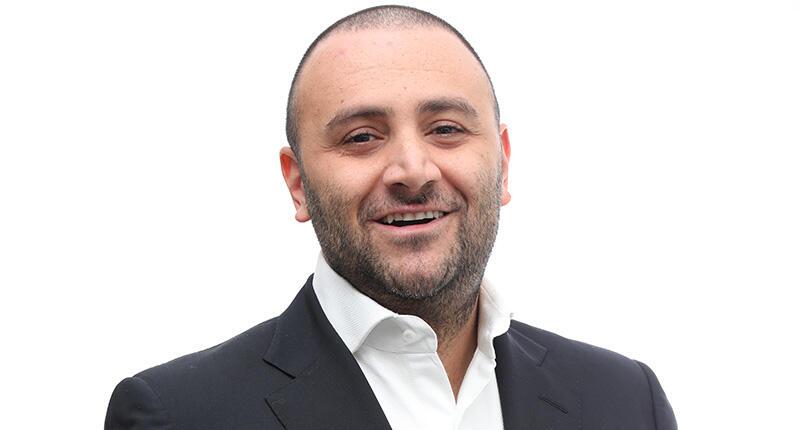Squirrel Spotting: A Blueprint for Building Sales Plans for the New Year
Columnist Peter Smith outlines the questions business owners need to ask themselves regardless of how aggressive their 2023 sales goals are.

That the task this year comes after two years of a COVID economy that began with all of us holding our collective breath in March/April 2020 before enjoying an 18-month ride like no other in the history of our industry makes this year’s version even more compelling.
Whether you are a large or small company, a retailer or supplier, the process of formulating a sales plan can be as complex as anything you will do throughout the year, or as simple as randomly throwing a dart and accepting whatever number comes up as long as it’s more than last year.
As absurd as the latter statement might seem, the construction of a sales plan is not always as considered and/or logical as you might think.
Some organizations spend the minimum amount of time preparing the plan. Others deliver seemingly elaborate presentations to key stakeholders that are nothing more than blind shots at the dartboard to quickly get through a process often seen as a necessary evil.
Other companies put the time and effort into really understanding their business.
They dissect the previous year and identify opportunities for improvement. They look at relationship-building, their people, their processes, their product offerings, their new customer acquisition initiatives, their key-account development opportunities, their technology and data capacity, their online and social media commerce, etc.
In short, they examine everything that might positively or negatively influence the sales results of the new year.
Any or all of the aforementioned elements can be factors as long as the plan for addressing them is both tangible and realistic. For instance, “do a better job on product development to improve sales” is neither strategic nor actionable.
If you want to look at product development as an opportunity for growth, you need to utilize data to understand.
Ask yourself the following.
• What works or does not work with your current offerings?
• What price points have holes that should be addressed?
• What gaps exist in your current inventory?
• How do your current products align with your aspiration as a business?
• Where are you not getting traction with current inventory?
• What is the plan to liquidate existing inventory to free up dollars?
• How will your changes affect existing relationships?
If you believe you need more new customers—who doesn’t?—which strategy will you employ to make that happen and drive sales growth?
Ask yourself the following.
• Have you identified your target customers?
• How will you communicate to those target customers?
• What is your message and why should prospective customers care?
• What resources will you deploy to make that goal realistic?
• Will you need to add people to that task?
• Are you budgeting accordingly?
By all accounts, real growth beyond a certain point cannot come if you are going back to the same base of customers again and again. Yet, seemingly smart people continue to talk about acquiring new customers without honestly addressing the costs and challenges of doing so.
There are myriad elements to building a sales plan and some will be more relevant for one business versus another.
However, no matter what areas you elect to focus on in building your plan, it is essential to examine all of the key ingredients that might have an impact and understand why and how they should unfold.
If, for example, you are looking at small, incremental increases over the previous year, a full review of your performance across key indicators might include the following.
• Business from current customers, minus aberrations that won’t happen again. In retail, that might include significant purchases from important one-off or major milestone occasions. On the supplier side, it could mean one-time inventory buildups for your biggest customers, or additional retail doors added from the previous year that won’t repeat.
• Look closely at notable personnel additions or subtractions and how they might impact your plan.
• Look at customers lost or added that might impact your plan.
• Review process innovations that could positively influence your ability to better service your clients.
• Look at any technology improvements that promise quicker replenishment of bestsellers, or faster turnaround of special and custom orders.
In effect, any reasonable and tangible change that might positively or negatively impact your business should be factored into building your plan.
As for the more aggressive, game-changing plan—where are you targeting significant growth?
In many respects, that bigger aspiration is almost less complex than the limited growth of the previous model. I confess to being personally drawn to the bigger plan for many reasons.
The scale alone often serves as a catalyst and helps galvanize attention in a way that smaller incremental increases just don’t do.
And the process of deconstructing the business down from the much bigger number to best understand what is needed by month, by customer, by product category, by new customer acquisition, by expansion and/or company acquisition, by personnel additions, etc., is a whole lot of fun.
Embracing the big plan is not for the faint of heart. It demands a clarion call to the whole organization and a real commitment to resource allocation.
It also demands real courage as the risks of failure are greater. Naturally, the upside is also considerable.
It is my view that you can lay down that bigger marker whether you are a $1 million business, a $5 million business, or a $50 million business. The principles of starting with the end and reverse-engineering the business remains the same, regardless of the size of the goal.
Whether you choose to build your plan off the previous year, with small percentage increases, or to establish a goal that really shakes the tree has much to do with the temperament of each business leader.
Either can work as long as you honestly and openly do the hard work, address the realities of the business from a micro and a macro perspective, and prepare to walk your talk.
Happy New Year!
The Latest

Carlos Jose Hernandez and Joshua Zuazo were sentenced to life without the possibility of parole in the 2024 murder of Hussein “Sam” Murray.

Yood will serve alongside Eduard Stefanescu, the sustainability manager for C.Hafner, a precious metals refiner in Germany.

The New Orleans jeweler is also hosting pop-up jewelry boutiques in New York City and Dallas.

How Jewelers of America’s 20 Under 40 are leading to ensure a brighter future for the jewelry industry.

Set in a Tiffany & Co. necklace, it sold for $4.2 million, the highest price and price per carat paid for a Paraíba tourmaline at auction.


The jeweler’s “Deep Freeze” display showcases its iconic jewelry designs frozen in a vintage icebox.

Take luxury gifting to new heights this holiday season with the jeweler’s showstopping 12-carat sphene ring.

Roseco’s 704-page catalog showcases new lab-grown diamonds, findings, tools & more—available in print or interactive digital editions.

This year's theme is “Unveiling the Depths of the Ocean.”

In its annual report, Pinterest noted an increase in searches for brooches, heirloom jewelry, and ‘80s luxury.

Starting Jan. 1, customers can request the service for opal, peridot, and demantoid garnet.

The 111-year-old retailer celebrated the opening of its new location in Salem, New Hampshire, which is its third store in the state.

The new catalog features its most popular chains as well as new styles.

The filmmaker’s personal F.P. Journe “FFC” prototype was the star of Phillips’ recent record-setting watch auction in New York.

The new location in the Design District pays homage to Miami’s Art Deco heritage and its connection to the ocean.

Inflations, tariffs, and politics—including the government shutdown—were among consumers’ top concerns last month.

“Longtime favorite” presenters, as well as first-time speakers, will lead talks and workshops at the annual event in Tucson next year.

Silas Smith of Meridian Metalworks won the challenge with his pendant that blends Australian and American landscapes.

The sale of the 31.68-carat, sunset-hued stone was part of Sotheby’s first series of events and auctions in Abu Dhabi.

The collection features characters and motifs from Ukrainian folklore, including an enchanted mirror and a magic egg.

MatrixGold 3.11, the newest version of the jewelry design program, offers more flexibility, precision, and creative control.

The pavilion will be part of the 2026 JA New York Spring show, scheduled for March 15 to 17.

Kadet, a 1994 National Jeweler Retailer Hall of Fame inductee, helped grow the family-owned retailer in the Chicago area and beyond.

Billed as the world’s smallest wearable, Lumia Health’s new smart earrings have a health tracker subtly embedded in the back.

Don’t let those with December birthdays feel blue. Help them celebrate their month with blue zircon, turquoise, and tanzanite.

The new pink sapphire version of the piece dances with its wearer in the brand’s “Icons After Dark” holiday campaign.

A choice that’s generated a lot of commentary, Pantone says “Cloud Dancer” marks a fresh start and encourages relaxation and creativity.





























